Comprehensivist
Platinum Member
- Joined
- Aug 23, 2008
- Messages
- 3,302
Padre Observations & Gaucho Comparison
Intro / History::
The Padre was first designed and built in March 2011. There are two shown in fotki from that timeframe.
Here is the first one. The black handle with white pins and cross etched on the blade are very fitting for a "Priest's" knife.


Here is the second one:

Like many people on this forum, I want to have a low maintenance Fiddleback knife that I can enjoy using every day. That means a stainless kitchen knife to me since I make food daily. That is way more often than I get outside to hike, camp, or do bushcraft type wood cutting with a typical Fiddleback knife. With that goal in mind, I can say with certainty that there is no other Fiddleback model I have pursued longer or harder than a Padre a CPM 154 with a synthetic handle. With only a handful or so in existence until very recently, this has been a long pursuit. I tracked down a couple of the originals, but the owners were unwilling to sell or trade them despite some significant offers from me. I cant blame them for holding onto those rare knives.
I have a Gaucho in 3/32 CPM 154 that has filled the food prep role nicely so far. It has been my most used Fiddleback for that reason. I reviewed it very favorably here about a year ago.
http://www.bladeforums.com/forums/s...dleback-Gaucho-Review?highlight=Gaucho+Review
The only feature that I wished was different about the Gaucho was that it would have more finger clearance to allow me to use the full length of the cutting edge and not bang my knuckles on the cutting board. At the end of that review, I pleaded with Andy to bring back the Padre since I assumed that the longer and taller blade meant there would be more finger clearance too.
My search for a Padre finally reached its conclusion in February when I received one in 3/32 CPM 154 as part of an epic trade deal with a good forum friend. The one I got has a Black G10 handle with white pins reminiscent of the first one. It has a tumbled finish and trinity pin-out in lieu of the cross etch on the blade.
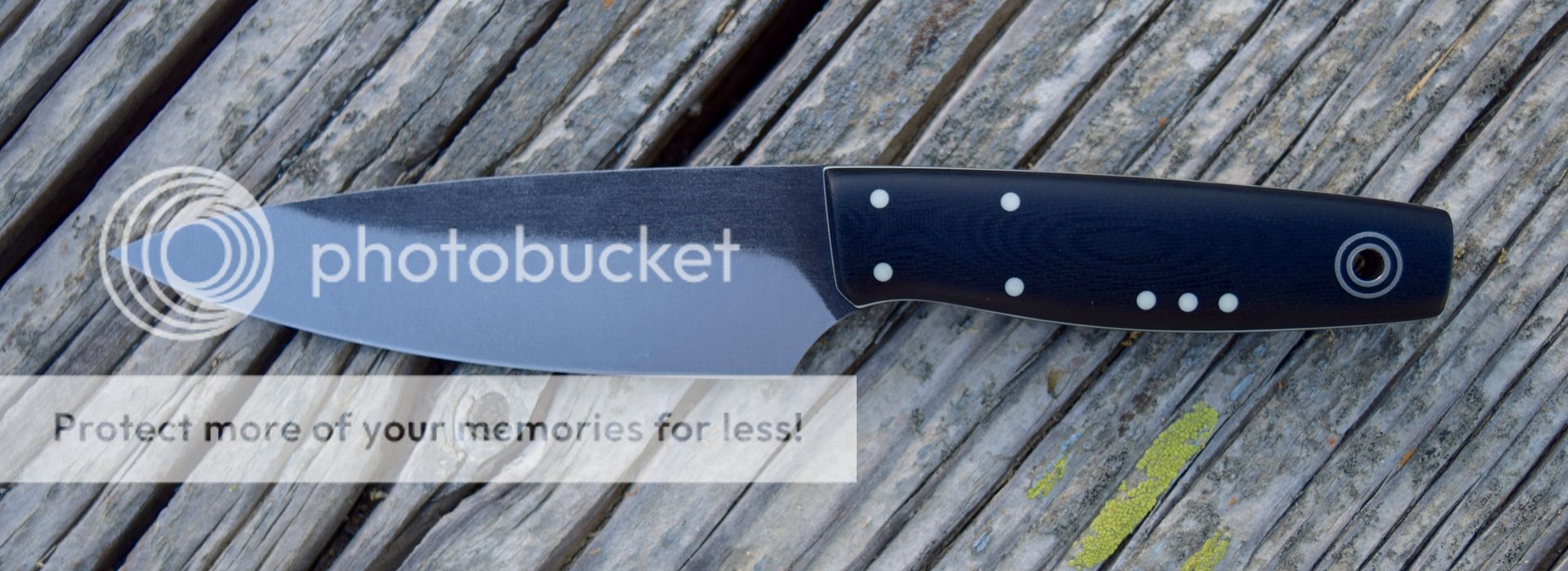


Specifications::
Note: The length measurements referenced below use the top front edge of the handles as a starting point. That means handle length is from that location to the farthest point rearward and blade length is from there to the tip. The handle height measurements use the lowest respective lowest points of the handle front, middle, and back, to the relative highest point above that location.
OAL: 9.371
Blade Length: 5.176
Handle Length: 4.195
Steel & Thickness: .105 (Note: 3/32 with mill finish)
Tang Type: SFT (Skeletonized Full Tang)
Grind: Convex (with tumbled finish)
Handle Material: Black G10 over black with white pinstripes & pins
Weight (oz.): 6.1
Blade Height @ Ricasso: 1.469
Handle Measurements @ Front: 1.011 High, .697 Wide, & 2.970 Circumference
Handle Measurements @ Palmswell: 1.056 High, .766 Wide, & 3.374 Circumference
Handle Measurements @ Back: .753 High, .709 Wide, & 2.687 Circumference
Distance from Front Edge of Handle to Center of Palmswell: 2.108"
Clearance to Cutting Board at Bottom of Palmswell: .394
Distance from Front Edge of Handle to Balance Point: .830


Comparison Photos::
The handle on the Padre is .413 shorter than the Gaucho.
Back-to-back:
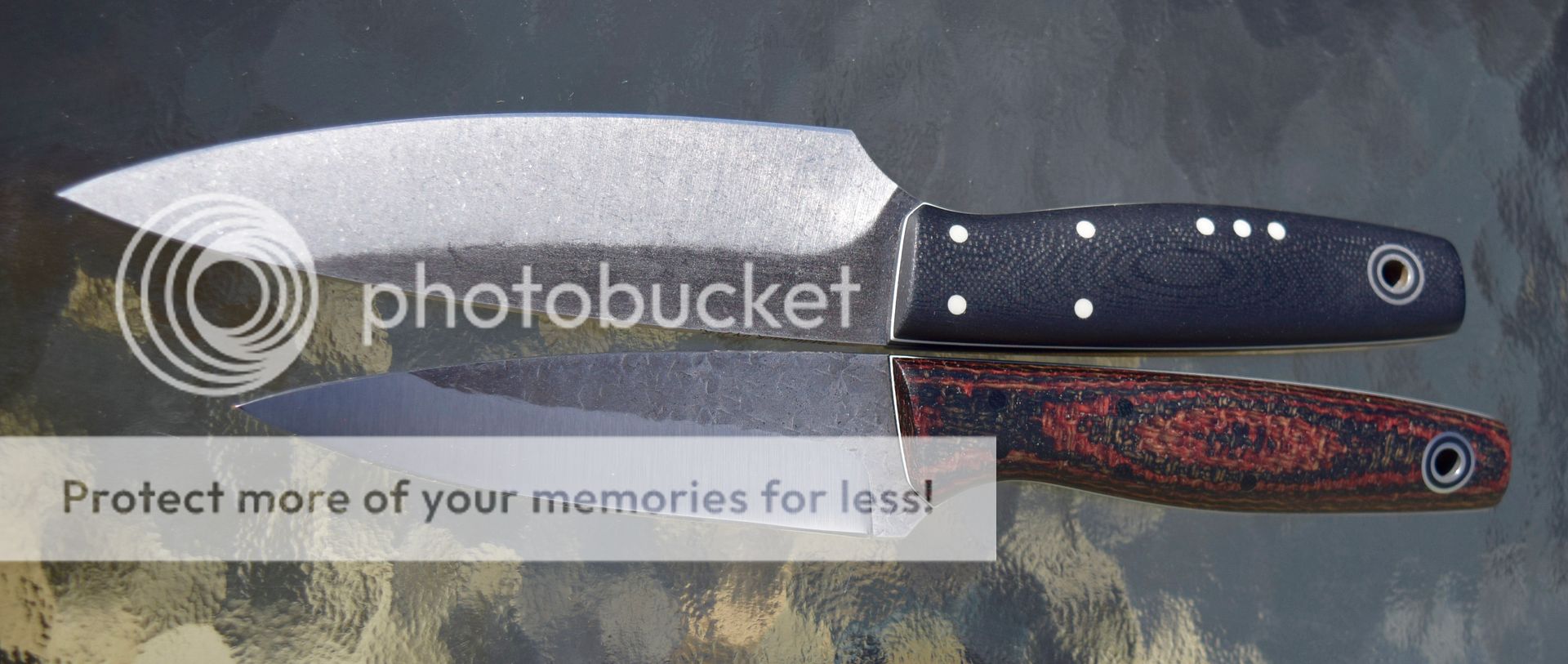
Lined-up on the pommel end:
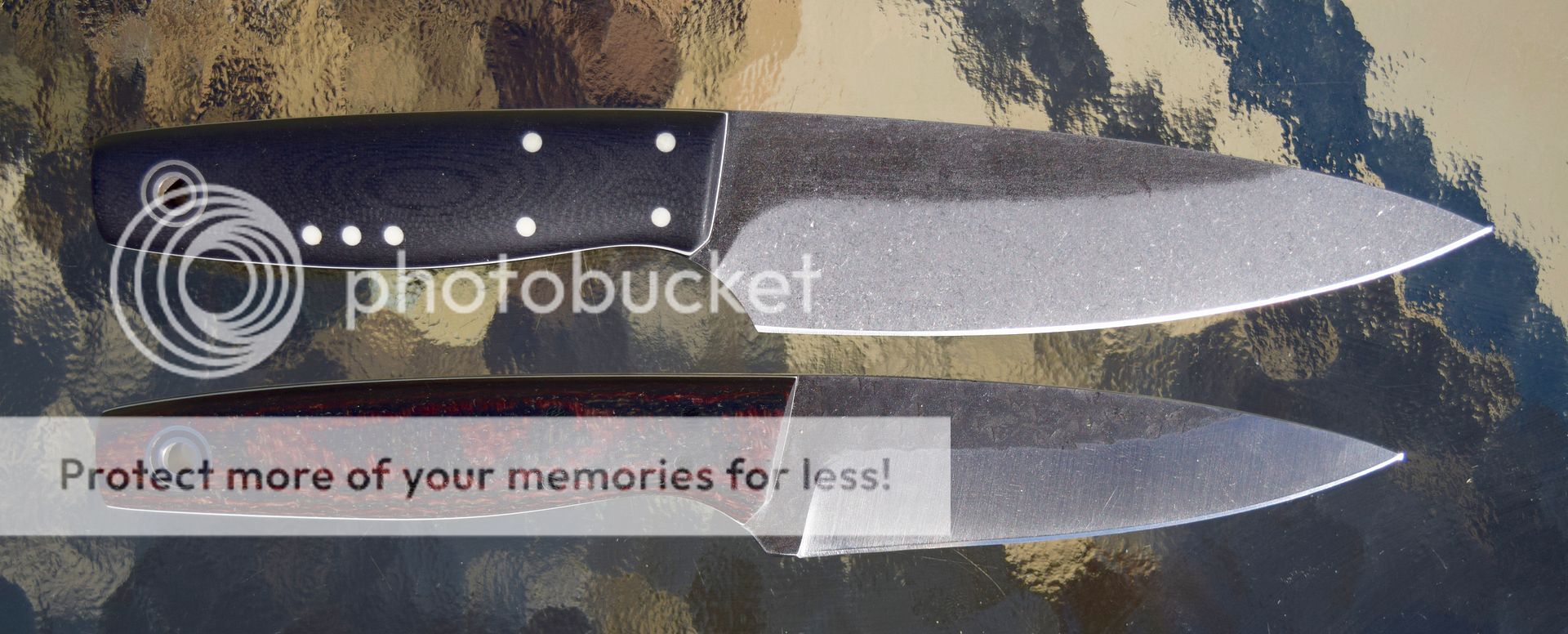
Lined-up on the front of the handles:
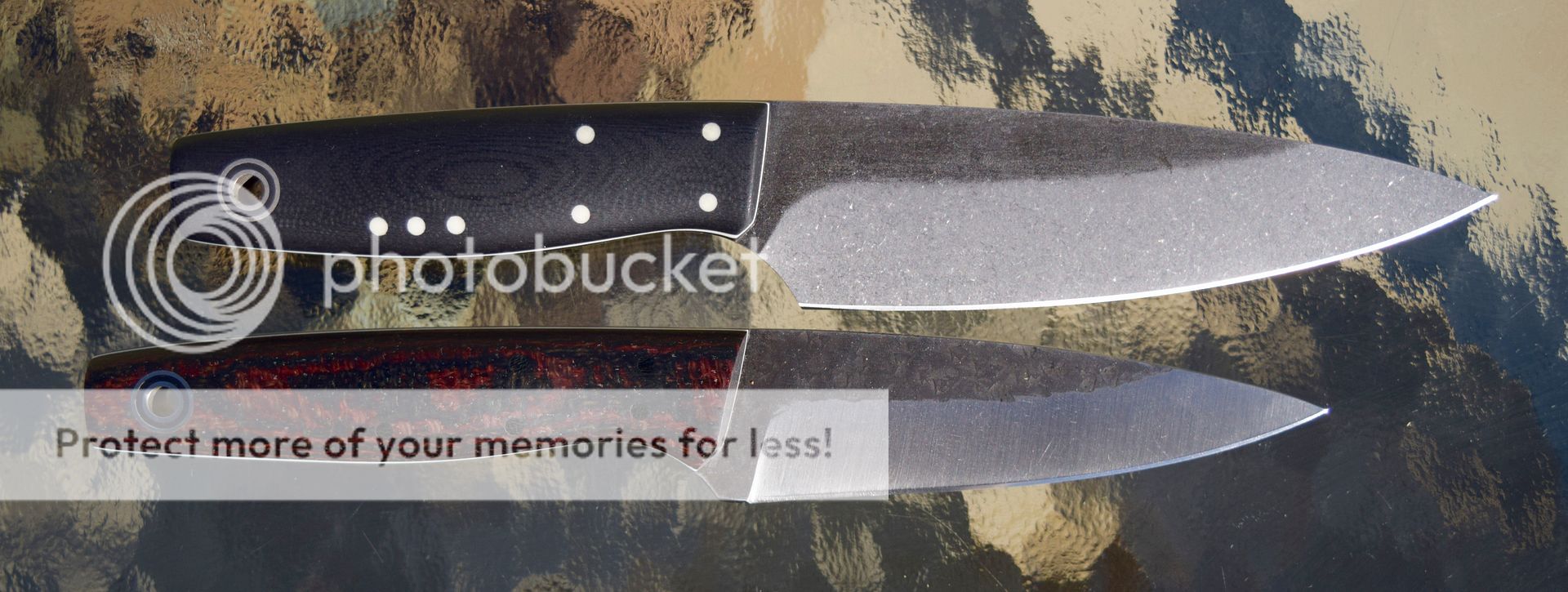
Side view:

Stacked view:

The handle on the Padre is .095 taller and .013 thicker at the palm swell than the Gaucho.
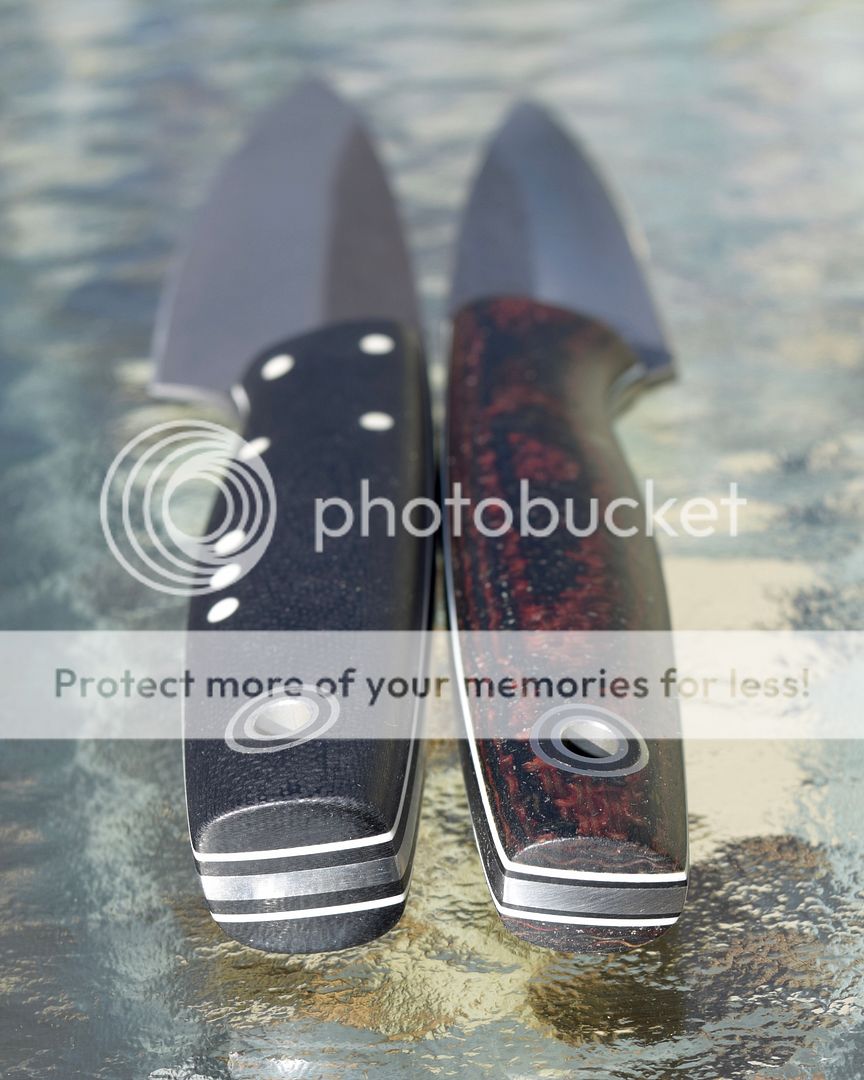
I was disappointed to find that the finger clearance with the back of edge blade down is slightly less on the Padre (.394) than it is on the Gaucho (.425") despite the taller blade on the Padre.
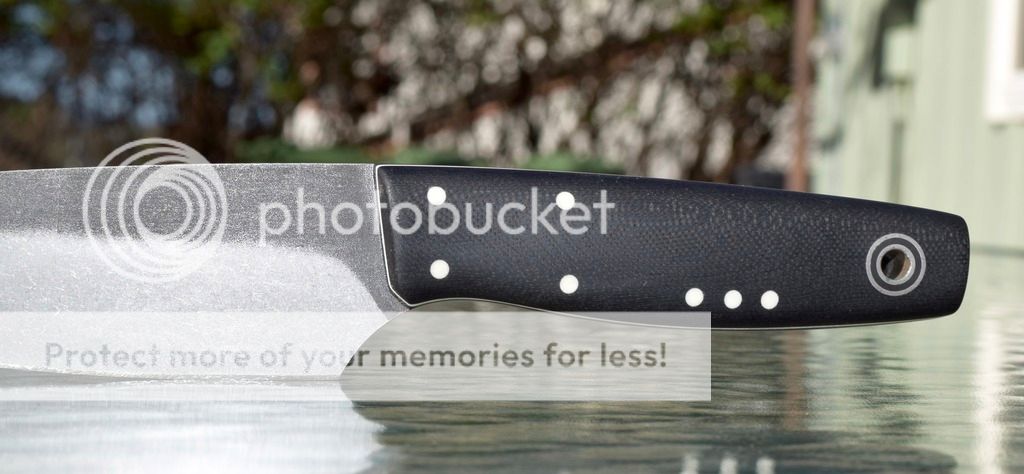
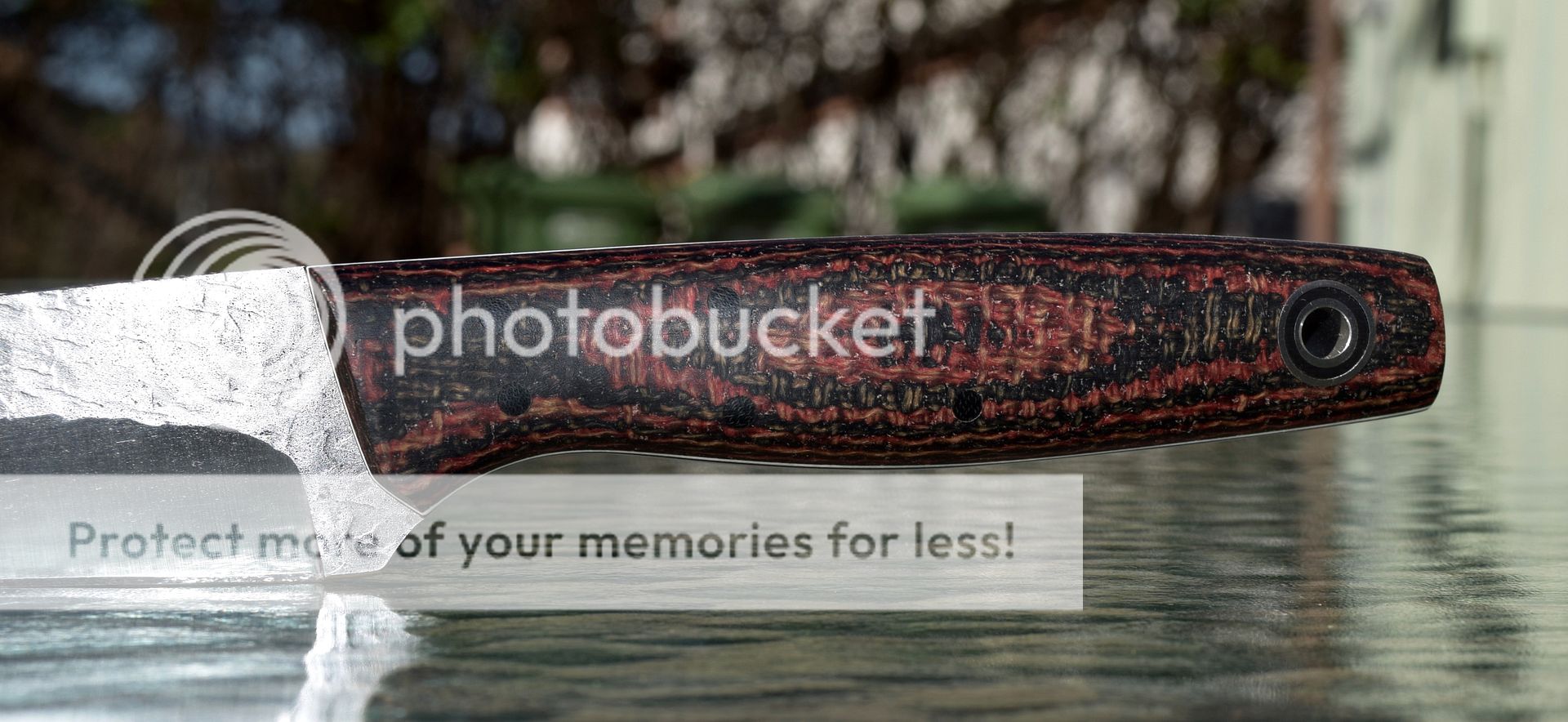
In-Hand Photos & Comments:
This is close to the regular grip I use on kitchen knives.
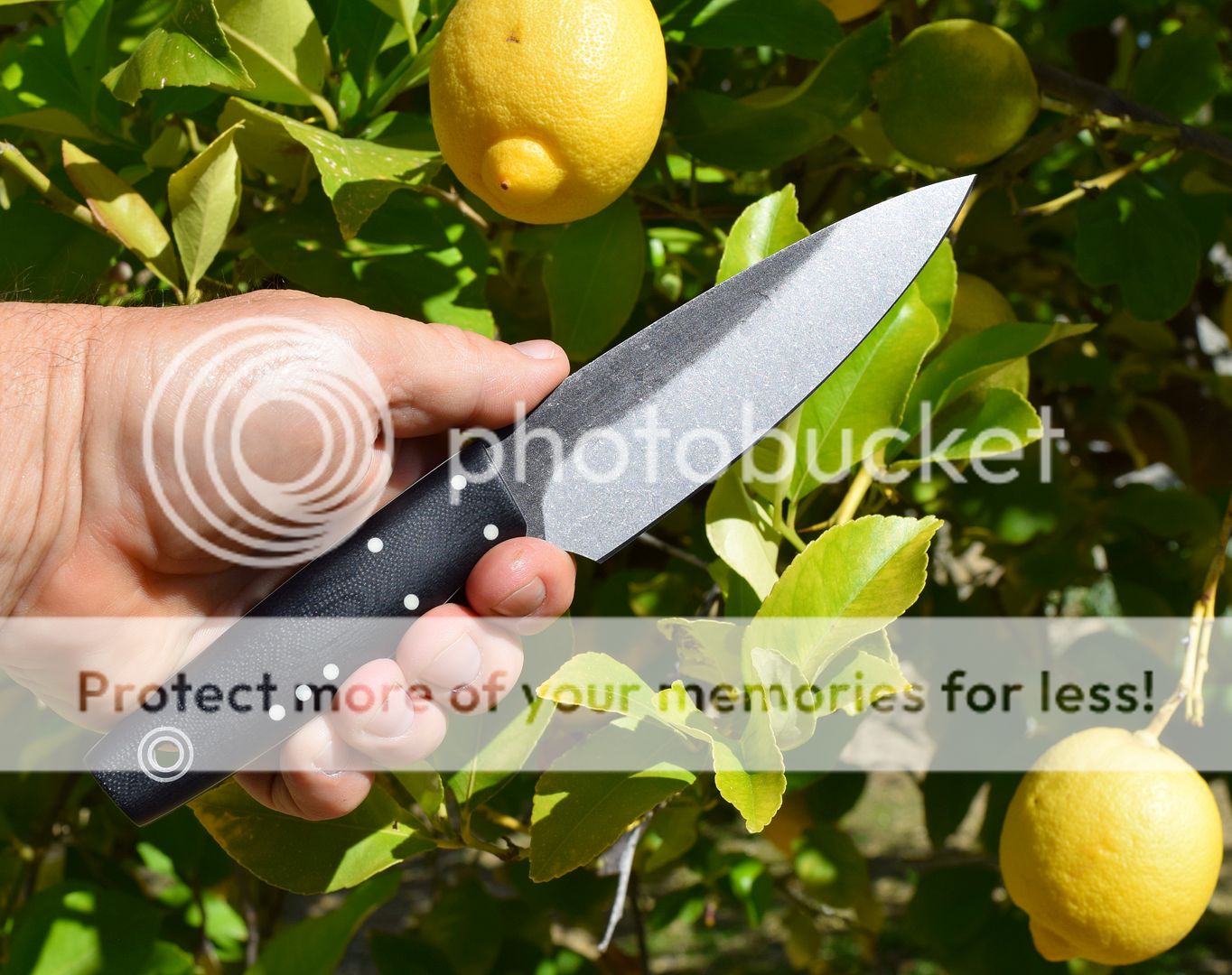
This is the modified grip I use for kitchen knives with minimal finger clearance to the cutting board.
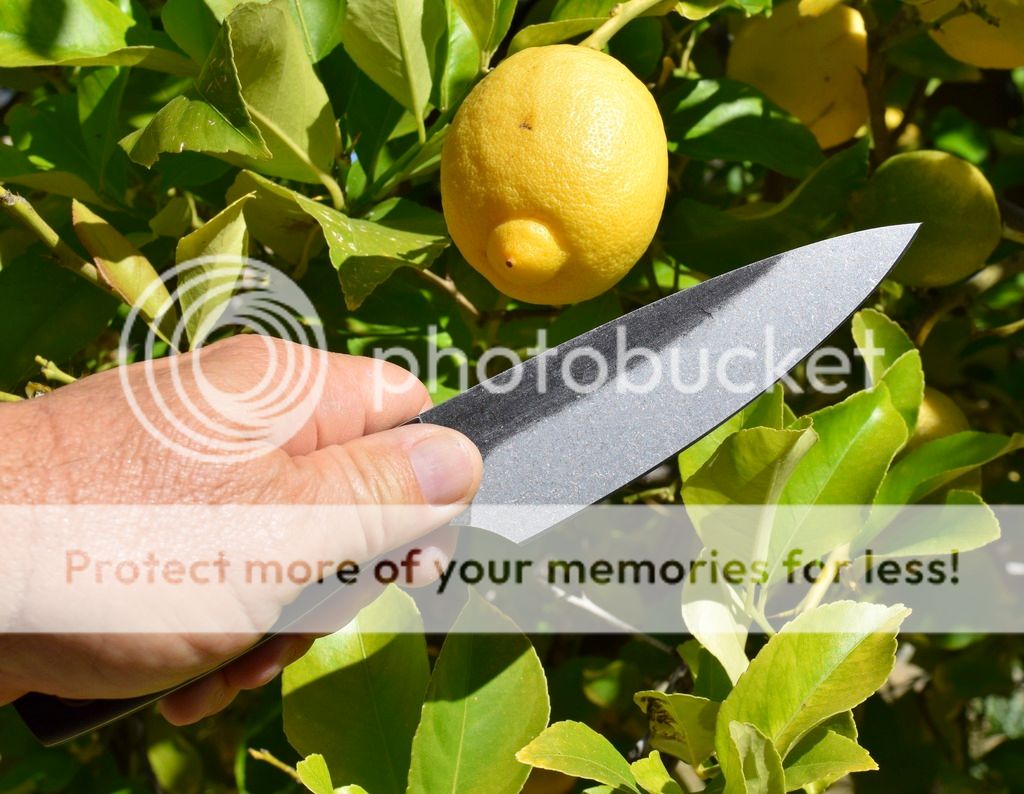
I asked my wife to hold the knife for the next two pictures.
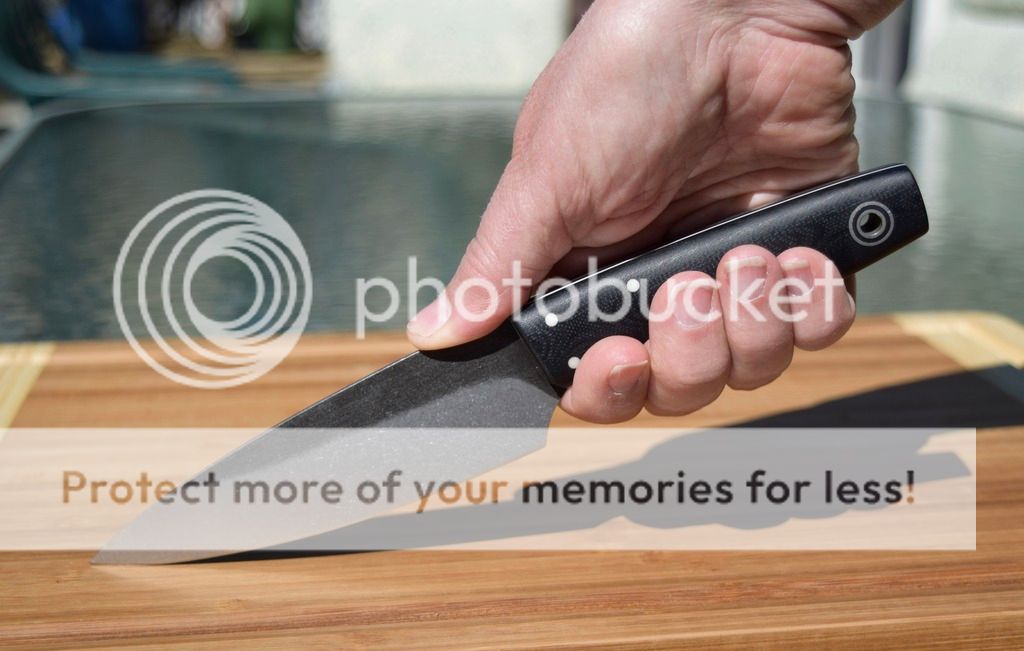
She does not have enough finger clearance to rock all the way to the back of the blade before her fingers contact the cutting board.
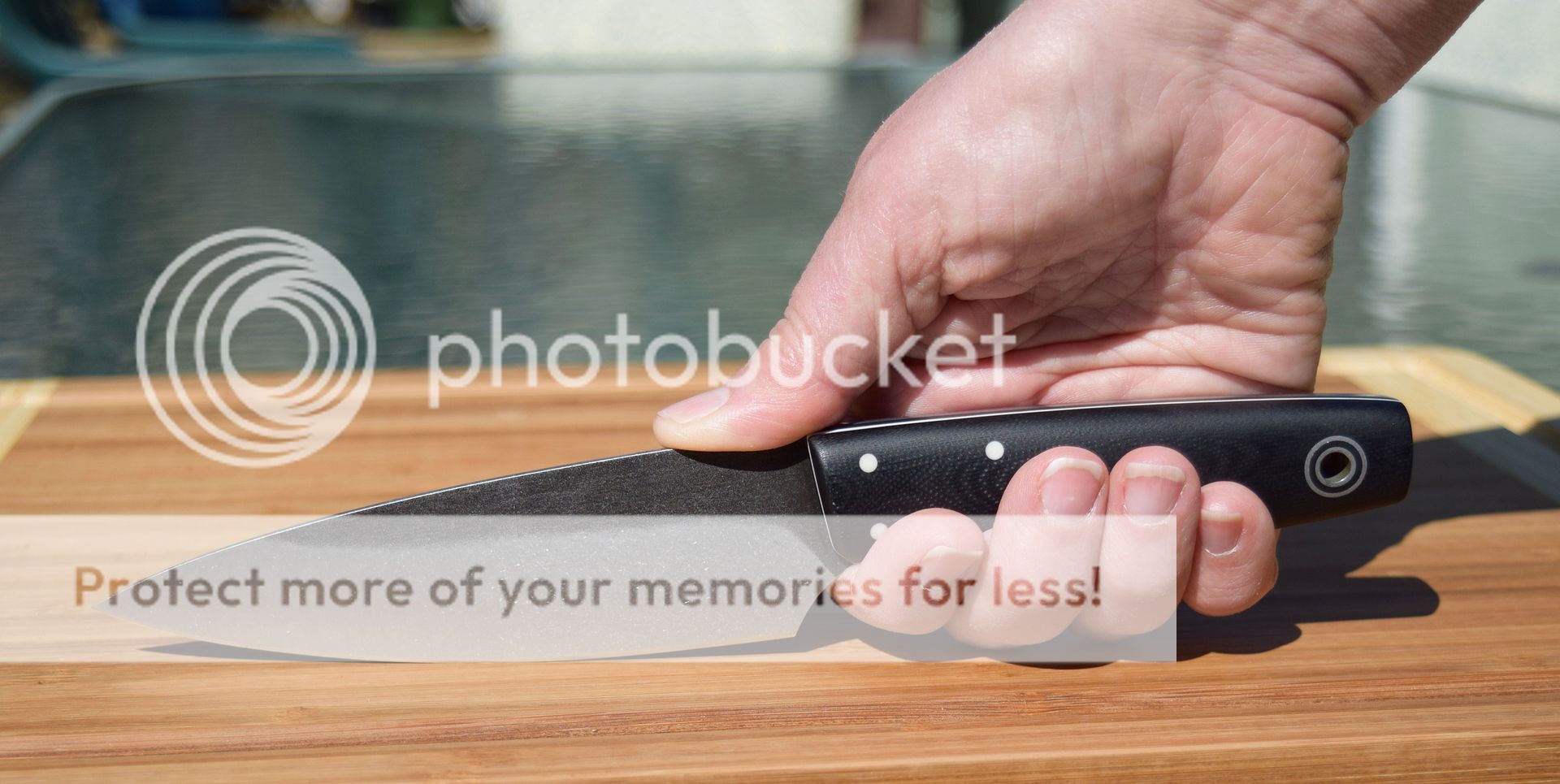
Intro / History::
The Padre was first designed and built in March 2011. There are two shown in fotki from that timeframe.
Here is the first one. The black handle with white pins and cross etched on the blade are very fitting for a "Priest's" knife.


Here is the second one:

Like many people on this forum, I want to have a low maintenance Fiddleback knife that I can enjoy using every day. That means a stainless kitchen knife to me since I make food daily. That is way more often than I get outside to hike, camp, or do bushcraft type wood cutting with a typical Fiddleback knife. With that goal in mind, I can say with certainty that there is no other Fiddleback model I have pursued longer or harder than a Padre a CPM 154 with a synthetic handle. With only a handful or so in existence until very recently, this has been a long pursuit. I tracked down a couple of the originals, but the owners were unwilling to sell or trade them despite some significant offers from me. I cant blame them for holding onto those rare knives.
I have a Gaucho in 3/32 CPM 154 that has filled the food prep role nicely so far. It has been my most used Fiddleback for that reason. I reviewed it very favorably here about a year ago.
http://www.bladeforums.com/forums/s...dleback-Gaucho-Review?highlight=Gaucho+Review
The only feature that I wished was different about the Gaucho was that it would have more finger clearance to allow me to use the full length of the cutting edge and not bang my knuckles on the cutting board. At the end of that review, I pleaded with Andy to bring back the Padre since I assumed that the longer and taller blade meant there would be more finger clearance too.
My search for a Padre finally reached its conclusion in February when I received one in 3/32 CPM 154 as part of an epic trade deal with a good forum friend. The one I got has a Black G10 handle with white pins reminiscent of the first one. It has a tumbled finish and trinity pin-out in lieu of the cross etch on the blade.



Specifications::
Note: The length measurements referenced below use the top front edge of the handles as a starting point. That means handle length is from that location to the farthest point rearward and blade length is from there to the tip. The handle height measurements use the lowest respective lowest points of the handle front, middle, and back, to the relative highest point above that location.
OAL: 9.371
Blade Length: 5.176
Handle Length: 4.195
Steel & Thickness: .105 (Note: 3/32 with mill finish)
Tang Type: SFT (Skeletonized Full Tang)
Grind: Convex (with tumbled finish)
Handle Material: Black G10 over black with white pinstripes & pins
Weight (oz.): 6.1
Blade Height @ Ricasso: 1.469
Handle Measurements @ Front: 1.011 High, .697 Wide, & 2.970 Circumference
Handle Measurements @ Palmswell: 1.056 High, .766 Wide, & 3.374 Circumference
Handle Measurements @ Back: .753 High, .709 Wide, & 2.687 Circumference
Distance from Front Edge of Handle to Center of Palmswell: 2.108"
Clearance to Cutting Board at Bottom of Palmswell: .394
Distance from Front Edge of Handle to Balance Point: .830

Comparison Photos::
The handle on the Padre is .413 shorter than the Gaucho.
Back-to-back:

Lined-up on the pommel end:

Lined-up on the front of the handles:

Side view:

Stacked view:

The handle on the Padre is .095 taller and .013 thicker at the palm swell than the Gaucho.

I was disappointed to find that the finger clearance with the back of edge blade down is slightly less on the Padre (.394) than it is on the Gaucho (.425") despite the taller blade on the Padre.


In-Hand Photos & Comments:
This is close to the regular grip I use on kitchen knives.

This is the modified grip I use for kitchen knives with minimal finger clearance to the cutting board.

I asked my wife to hold the knife for the next two pictures.

She does not have enough finger clearance to rock all the way to the back of the blade before her fingers contact the cutting board.



